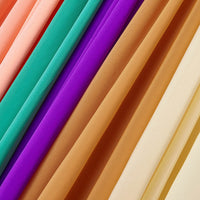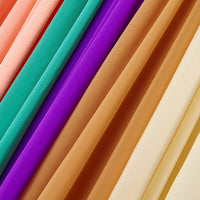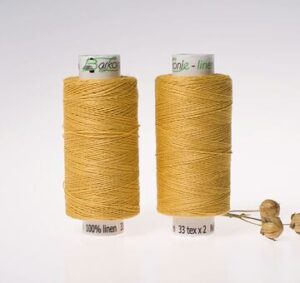Is Chiffon or Acrylic Better for Hot Weather? Textile Insights

Introduction
Choosing the right fabric is crucial in fashion and sewing, especially for hot weather. Chiffon and acrylic are popular options, each with unique properties. This article explores which is better suited for warm climates, providing insights into their compatibility, benefits, and challenges in textile mixing.
Compatibility Analysis
When it comes to hot weather, the answer leans towards chiffon. This lightweight, breathable fabric is ideal for staying cool. Acrylic, while durable, lacks the breathability needed for comfort in high temperatures. Here’s why chiffon works better:
- Texture and Weight: Chiffon’s airy texture and light weight make it perfect for hot weather, while acrylic is heavier and less breathable.
- Breathability: Chiffon allows air circulation, preventing overheating, unlike acrylic, which can trap heat.
- Care Requirements: Chiffon requires gentle handling, whereas acrylic is more robust but less comfortable in heat.
- Durability: Acrylic is more durable, but chiffon’s delicate nature is offset by its comfort in warm climates.
Fabric Properties Comparison Table
| Property | Chiffon | Acrylic |
|---|---|---|
| Fiber Content | Natural/Synthetic | Synthetic |
| Weight and Thickness | Lightweight | Medium-Heavy |
| Breathability | High | Low |
| Moisture-Wicking | Moderate | Low |
| Stretch and Elasticity | Low | Moderate |
| Wrinkle Resistance | Low | High |
| Care Instructions | Hand wash, air dry | Machine wash, dry |
| Durability | Moderate | High |
Benefits of Mixing These Fabrics
- Enhanced Texture and Visual Interest: Combining chiffon’s lightness with acrylic’s structure can create dynamic designs.
- Improved Comfort and Performance: Chiffon adds breathability, while acrylic contributes durability.
- Better Drape and Movement: Chiffon provides flow, enhancing movement in garments.
- Cost-Effectiveness: Mixing can reduce costs by balancing expensive chiffon with affordable acrylic.
- Seasonal Versatility: Layering acrylic over chiffon offers year-round wear.
- Design Possibilities: The contrast in textures allows for creative fashion and home decor applications.
Potential Challenges
- Different Shrinkage Rates: Pre-wash fabrics to prevent uneven shrinkage.
- Conflicting Care Requirements: Follow the gentlest care instructions for both fabrics.
- Texture Clash or Pilling: Use anti-pilling treatments on acrylic.
- Seam Puckering: Employ appropriate tension settings on the sewing machine.
- Color Bleeding or Fading: Test for colorfastness before combining.
Sewing & Styling Tips
- Sewing Techniques: Use a fine needle and polyester thread for chiffon, and a universal needle for acrylic.
- Needle and Thread Recommendations: Size 70/10 needle for chiffon; 80/12 for acrylic.
- Interfacing and Stabilizer Needs: Lightweight interfacing for chiffon to prevent distortion.
- Seam Finishing Methods: French seams for chiffon; overlock for acrylic.
- Pattern Selection Advice: Choose patterns with simple lines to accommodate both fabrics.
- Styling Ideas: Layer chiffon blouses over acrylic tank tops or use chiffon drapes with acrylic upholstery for a chic look.
Care & Maintenance Guide
- Washing Instructions: Hand wash chiffon separately; machine wash acrylic on gentle.
- Drying Recommendations: Air dry chiffon; tumble dry acrylic on low heat.
- Ironing and Steaming Tips: Use a low-heat iron for chiffon; medium heat for acrylic.
- Stain Removal: Spot clean chiffon with mild detergent; acrylic can handle stronger cleaners.
- Long-Term Care: Store chiffon in breathable bags to maintain its quality, and keep acrylic away from direct sunlight to prevent fading.
FAQ Section
-
Can you wash chiffon and acrylic together?
- It’s best to wash them separately due to different care needs.
-
Will chiffon shrink more than acrylic?
- Yes, chiffon is more prone to shrinkage. Pre-wash to minimize this.
-
What needle size should I use for sewing these fabrics together?
- Use a size 70/10 needle for chiffon and an 80/12 for acrylic.
-
Can you mix chiffon and acrylic in one garment?
- Yes, but consider care requirements and texture compatibility.
-
How do you prevent seam puckering when combining these fabrics?
- Adjust sewing machine tension and use appropriate needles.
-
Is it okay to mix chiffon and acrylic for upholstery?
- It’s possible, but chiffon is best used as an accent due to its delicate nature.
-
What’s the best way to finish seams with these fabrics?
- Use French seams for chiffon and overlock for acrylic.
In conclusion, while chiffon is better suited for hot weather due to its lightweight and breathable nature, combining it with acrylic can offer unique design opportunities. By understanding their properties and following the right techniques, you can create versatile and stylish garments and decor.


Leave a Reply